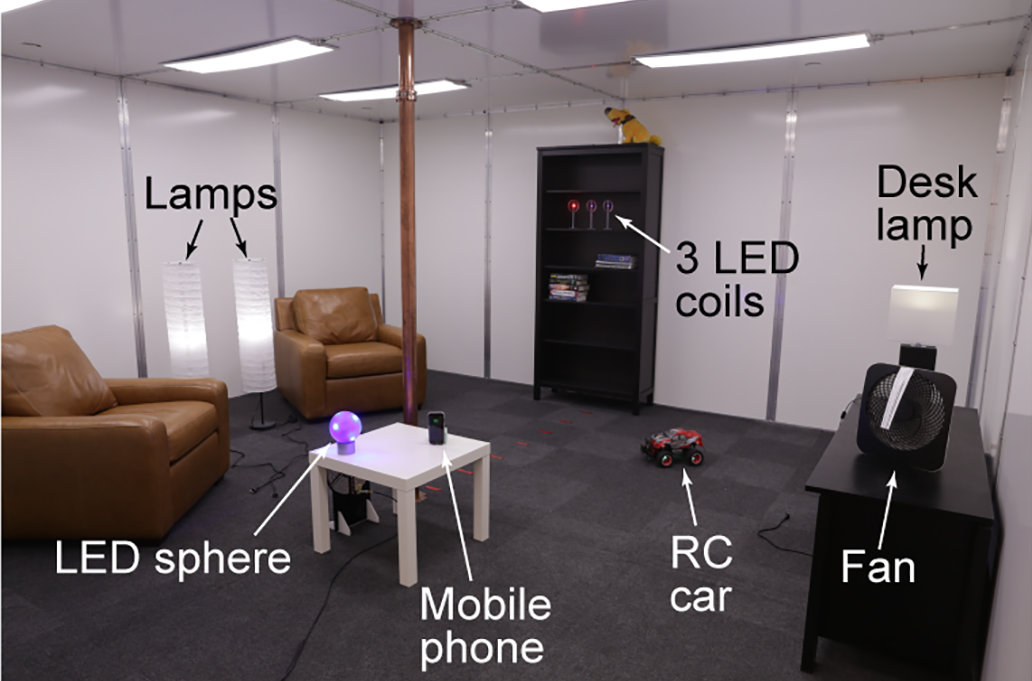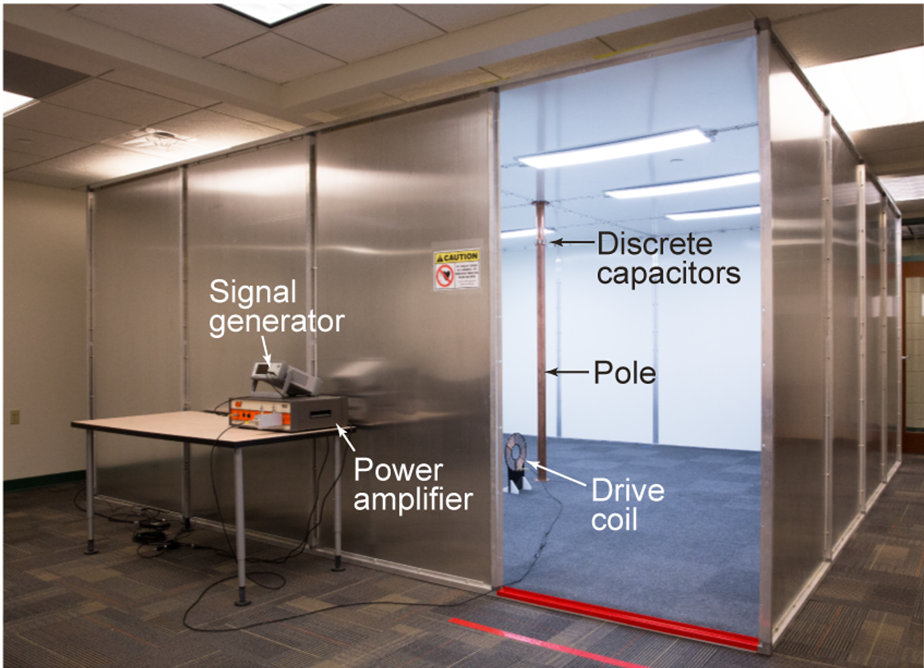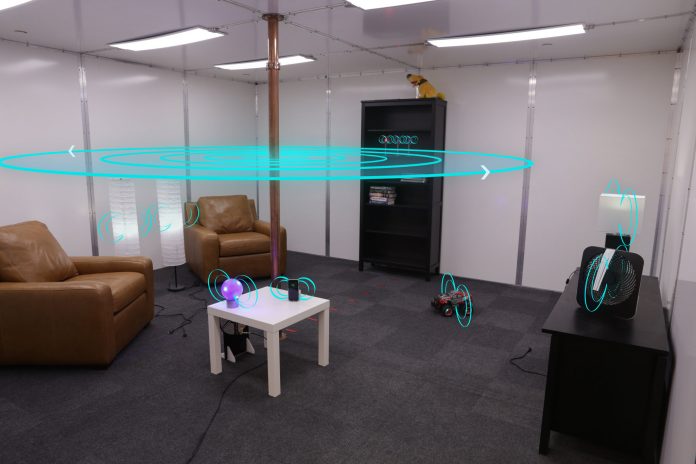Wireless charging of phones today consists of setting it on a charging pad or dock. While this is technically wireless, it still keeps you tethered to a charging pad or dock. A team at Disney Research has demonstrated that they can completely free you from power cords or docks all while making powering your devices as easy as walking into a room. In a paper published at plos.org, Disney Research shows how they built the system and the safety test results.
“This new innovative method will make it possible for electrical power to become as ubiquitous as WiFi,” Alanson Sample, associate lab director & principal research scientist at Disney Research, told phys.org. “This in turn could enable new applications for robots and other small mobile devices by eliminating the need to replace batteries and wires for charging.”
The new technique is called quasistatic cavity resonance (QSCR) and is capable of filling a room with a uniform magnetic field. The demonstration used a specially constructed 54 m3 room with a copper charging pole in the center and the walls, floor, and ceiling made from aluminum. Tests shows that they could get 95% efficiency near the pole and about 40% efficiency around the outer walls. This technology is not limited to just cell phones, they were able to seamlessly and simultaneously power 10 different devices.


Safety tests shows that researchers had to limit the pole to producing 1.9 kilowatts in order to pass IEEE and FCC safety requirements. At this power level, devices can still achieve a 90% power efficiency.
Sample also provided a glimpse of possible future enhancements to QSCR that included the ability to reduce the need for metal walls, ceilings, and floors as well as being able to retrofit QSCR into existing structures. Also, by using multiple poles they could accommodate larger spaces.
As far as other uses for QSCR, Sample said “In this work, we’ve demonstrated room-scale wireless power, but there’s no reason we couldn’t scale this down to the size of a toy chest or up to the size of a warehouse”










